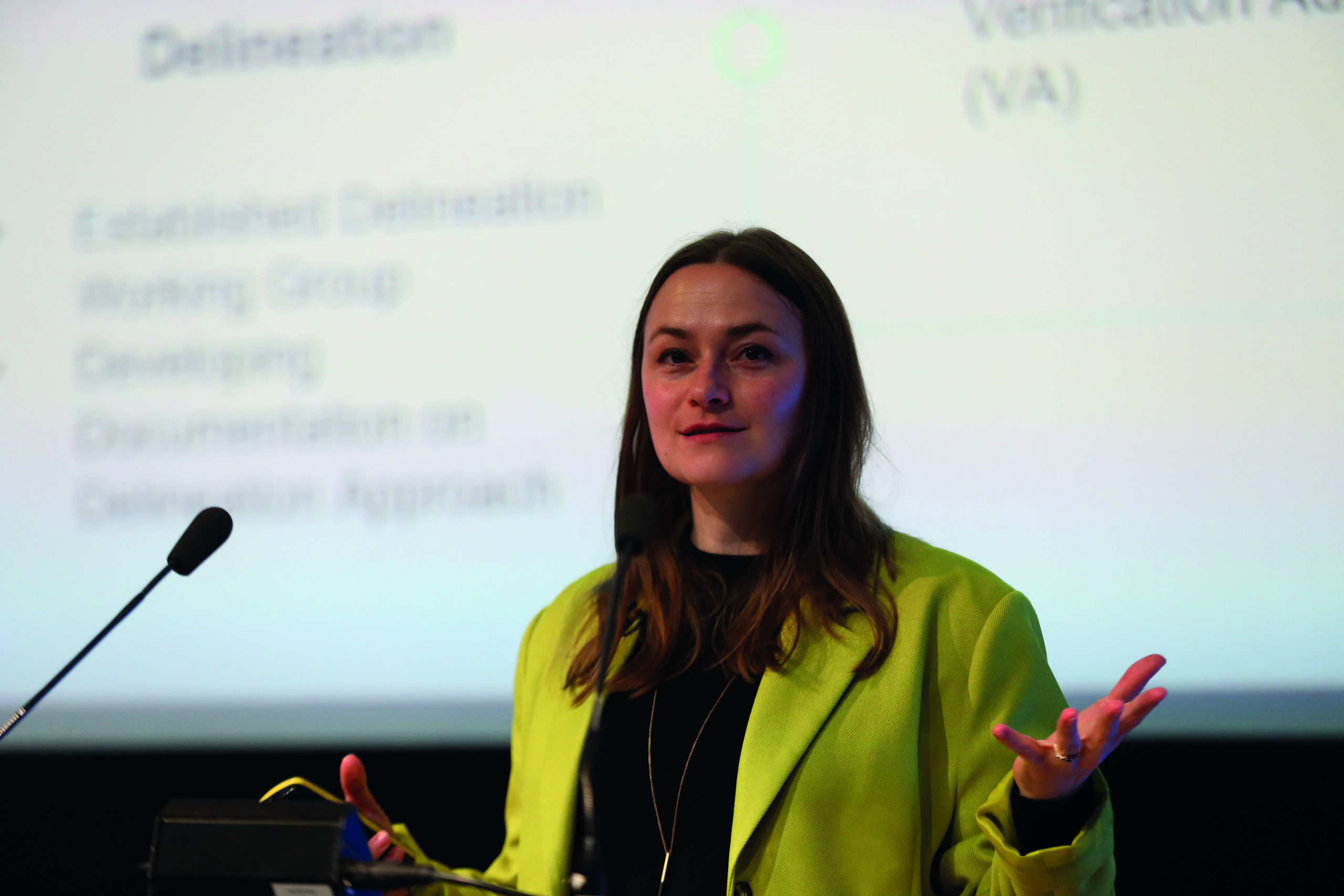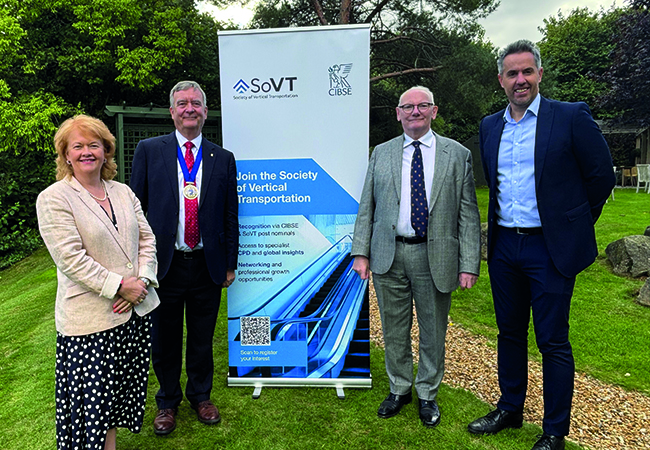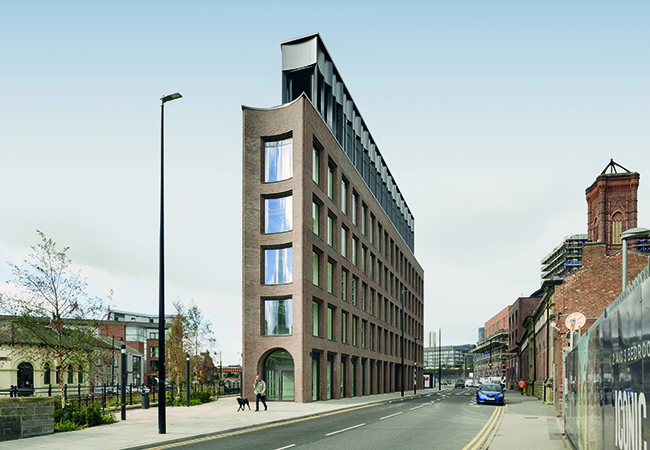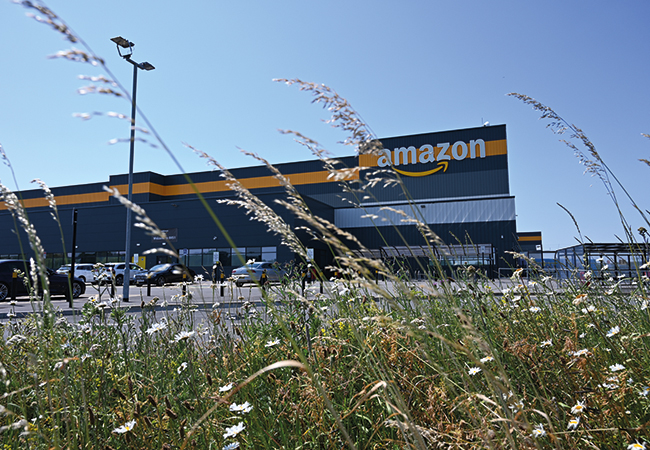
When Amazon co-founded and signed up to The Climate Pledge in 2019, it was one of the earliest and boldest corporate climate declarations of its kind. The pledge is a public commitment to achieve net zero carbon emissions across operations by 2040 and it now has more than 550 signatory companies, plus a $2bn fund to back innovation.
Among Amazon’s initiatives is its involvement in TM65.3, a tool designed to reduce building services embodied carbon in logistics centres.
Developed in partnership with CIBSE and Introba, TM65.3 builds on the existing TM65 calculation methodology, but goes deeper into overlooked carbon hot spots inside logistics buildings. These include materials handling equipment (MHE), such as conveyors, chutes and switchgear, which can represent an extra 17-53% of embodied carbon in logistics hubs.

Chris Roe, director, worldwide carbon, Amazon
‘When we deconstructed our carbon footprint and outlined the path to 2040, we identified the embodied carbon of building materials as a major contributor,’ says Chris Roe, director, worldwide carbon, at Amazon.
With operations in more than 60 countries and thousands of buildings – from fulfilment and data centres to grocery stores and film studios – Amazon’s portfolio is diverse and expansive.
Yet, Roe points out, ‘there are common threads in terms of material – every building needs lighting, HVAC and hot water. We’re trying to leverage our collective scale to accelerate this process of decarbonisation.’
A key early insight in Amazon’s climate journey was recognising the scale of embodied carbon in building materials, such as concrete and steel, which Roe explains is long overlooked in comparison to operational energy use.
Handling embodied carbon in logistics
Phil Birch, global lead, biodiversity, at Amazon, recalls how TM65.3 emerged from company research into Amazon’s carbon sources. ‘We’d been deep diving into primary core and shell building material – steel and concrete – and it led us to the question, “what about the equipment inside the building?”’
MHE was identified as a major contributor to embodied emissions. However, data availability was limited. ‘We found there were hardly any EPDs [Environmental Product Declarations] for MHE,’ says Birch.
The project involved categorising equipment types, then assessing the material mass and composition. Unsurprisingly, much of the carbon footprint was tied to metal-heavy equipment, especially steel and aluminium, explains Birch.
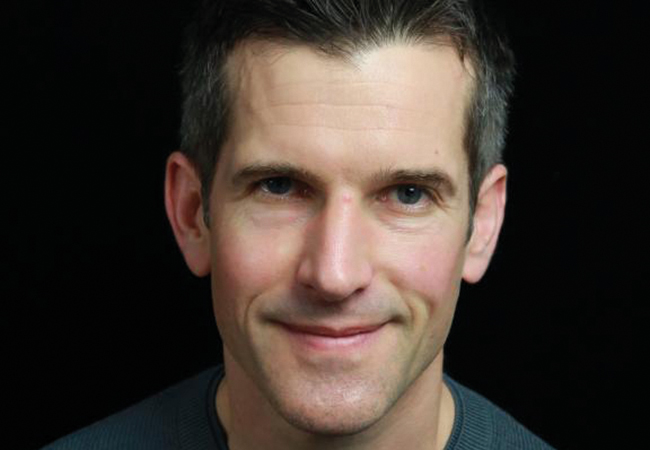
Phil Birch, global lead, biodiversity, Amazon
TM65.3 aims to help companies make more informed decisions about the type of equipment used in their warehouses. Equipment manufacturers can differentiate themselves and lead by example by developing equipment with lower-carbon footprints.
Amazon is also working with CIBSE to develop dedicated life-cycle assessment training, which aims to upskill industry professionals to evaluate and reduce embodied carbon more effectively.
Construction Carbon, in partnership with CIBSE and supported by Amazon, has launched the Lifecycle Carbon Assessor Practitioner Training programme, which is set to begin this month. The initiative comes in response to the increasing requirement for skilled professionals capable of consistently assessing and mitigating the environmental impact of construction projects throughout their life-cycle. The course aims to standardise whole life carbon assessments and includes online modules and a certification exam. ‘Building on CIBSE’s work on embodied carbon in building services, this programme will provide participants with the knowledge needed to excel in this crucial aspect of modern construction,’ says Simon Parker, managing director at CIBSE Services. More details: bit.lyCIBSELCAtrainingLifecycle Carbon Assessor Practitioner Training
In addition, Amazon has invested in start-ups working to disrupt carbon-intensive industries, says Roe, and has partnered with major suppliers to understand their decarbonisation roadmaps.
‘We discuss what we expect from them at the end of a project, in terms of bill of materials and the quantities, and what EPDs are available, so that we can then ingest this in a standard way into our measurement system,’ Roe explains. ‘Some of these challenges require step-change improvements and we’re doing what we can to accelerate that progress.’
One particularly powerful enabler is data. Amazon has built a proprietary software system to capture carbon-related data from across the company and assess environmental performance in real time.
‘The system is continually being refined to integrate with third-party tools,’ says Roe. ‘It allows our supply partners to provide performance data that feeds into our flywheel, where planning, performance tracking and learning become a continuous loop.’
Achieving zero carbon
Amazon’s same-day delivery site in Sacramento, California, SCA5, was the first fulfilment centre in North America to earn the International Living Future Institute’s Zero Carbon Certification.
SCA5 integrates lower carbon building materials, such as recycled asphalt and lower carbon concrete, fully electric HVAC systems, and high-efficiency equipment to reduce operational emissions.
The site is powered entirely by renewable energy, with rooftop solar panels expected to supply up to 80% of its electricity needs.
Building on a method
Amazon is now looking at TM65 for supermarkets, with plans to assess chiller cabinets, rooftop units and other equipment. The goal is to avoid ‘unicorn’ solutions that are only relevant to Amazon, and instead build robust, collaborative tools, says Birch: ‘We don’t want this to be a one-off methodology; we want it to be useable across the industry.’
In North America, Roe confirms that Amazon remains steadfast in its net zero commitments, regardless of political shifts. ‘Our major goal of net zero was set in 2019. These are not temporary, short-term challenges; they are going to take time.’
Birch agrees that this long-term outlook is critical, especially when dealing with complex and elusive emission sources such as refrigerants.
Andrew Rhodes, a principal sustainability engineer at Amazon, highlighted this challenge at CIBSE Build2Perform in 2024. ‘Refrigerants are difficult to track, the emissions data is often missing’. His solution is: ‘Keep it simple, and enlist the support of your maintenance service providers by incorporating reporting requirements into their scope of work.’
While carbon remains a central focus, Birch notes that the mission goes beyond emissions. ‘We’re also thinking about efficiency, noise, and the wellbeing of the people in those spaces. It’s not just about reducing emissions – it’s about improving building performance holistically.’
Regionally, Amazon is also adapting its strategies to local codes and performance-based targets. ‘National and regional codes will shape our local approach. For example, our data centres have set a 35% embodied carbon reduction target for core and shell construction.’
Amazon’s influence also lends credibility to the initiatives it supports, says Birch. ‘People may not know what TM65 is, but they know Amazon. That trust matters.’
Roe, meanwhile, highlights the power of shared learning and collaboration. ‘Without a community of like-minded companies driving forward, it’s hard to define best practice. We have to bring people together, share lessons, and make progress.’

